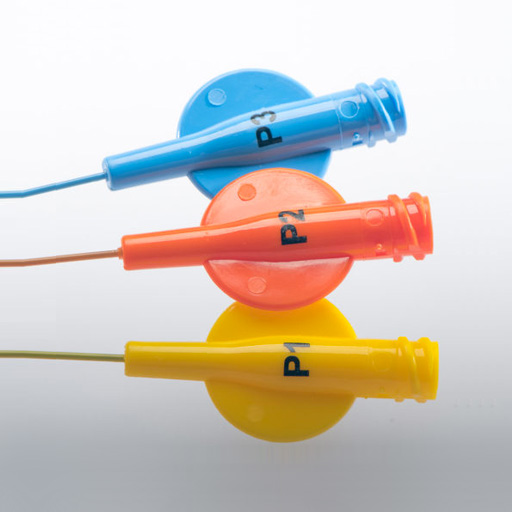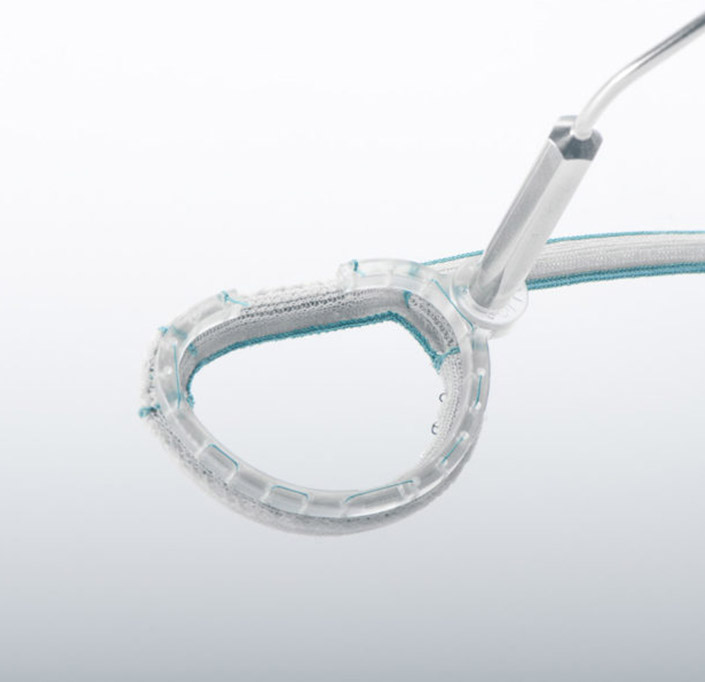Kalios™, an adjustable ring to repair the mitral valve
Kalios™ is the first mitral annuloplasty device that can be percutaneously adjusted to optimize valve repair at any time after implant, repeatedly, and while the heart is beating, thus avoid the need for further surgery.
Results among patients with implants are excellent. In our centre, we have successfully adjusted Kalios™ for a patient that had a functional mitral insufficiency relapse 11 months after their surgery. Thanks to the trans-catheter procedure, we avoided further cardiac surgery.’
This product is under clinical investigation

Configuration at implants
Includes a connection line (thin tube) that remains implanted with its distal orifice placed in subcutaneous position for easy acces to the setting (like a pace-maker).

Kalios™ fit
With the three-balloon catheter inserted with connectors.
Principle
Mitral regurgitation is a condition in which partial back-flow of blood occurs from the left ventricle to the left atrium during systole. This takes place when the mitral leaflets do not close properly due to inadequate contact, or coaptation, between them.
Kalios™ can be implanted as a conventional “Carpentier” ring to perform a normal annuloplasty procedure. In the case of recurrent mitral regurgitation, months or years after the initial surgery and when the implant is fully stabilized under a layer of cellular ingrowth, it is still possible to adjust the device and improve coaptation as required.
Therapy
In the event of residual regurgitation, the spacing mandrel is retrieved from the hollow structure of the ring through the connection line.
A three-balloon catheter is then inserted in its place from the distal end of the connection line and is progressively inflated in up to three predefined anatomical zones, called P1, P2 and P3, to bring the valve leaflets closer together. Adjustment is performed under echography in the zones of insufficient contact and involves displacing the annulus to the desired level to eliminate residual regurgitation.

Maximum reduction of the valve orifice area, with full adjustment being performed in all three zones (P1, P2 and P3) is limited to around 15% to prevent any risk of valve stenosis.
The distal end of the connection line is retrieved from its subcutaneous position in the subclavian region. The spacing mandrel is removed, and the three-balloon catheter introduced. Adjustment is then performed by means of the same procedure as that used for peri-operative adjustment.
Adjustment of the Kalios™ annuloplasty device can be repeated several times post-operatively, up to maximum expansion of the P1, P2 and P3 zones.
Affluent Medical is for the moment developing investigational medical devices not yet commercially available in any region.
